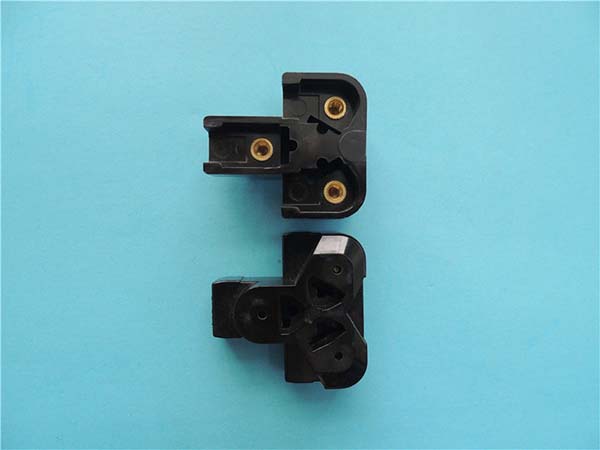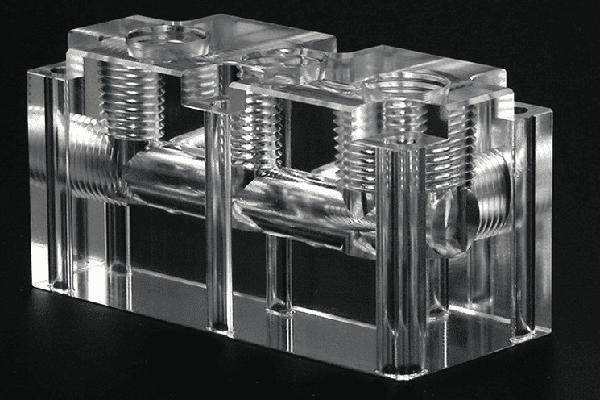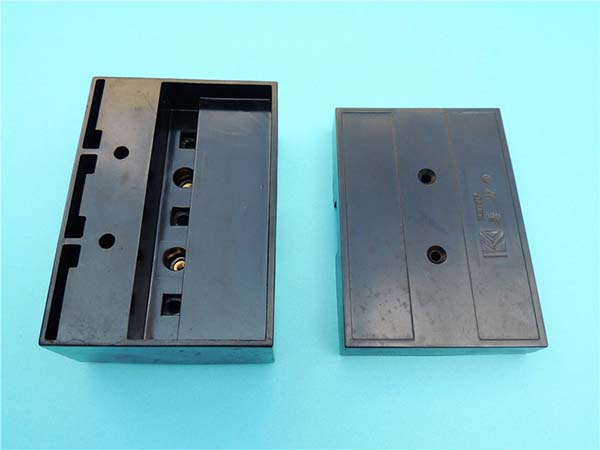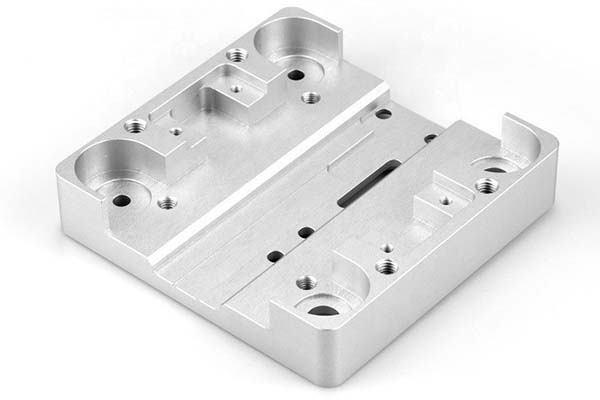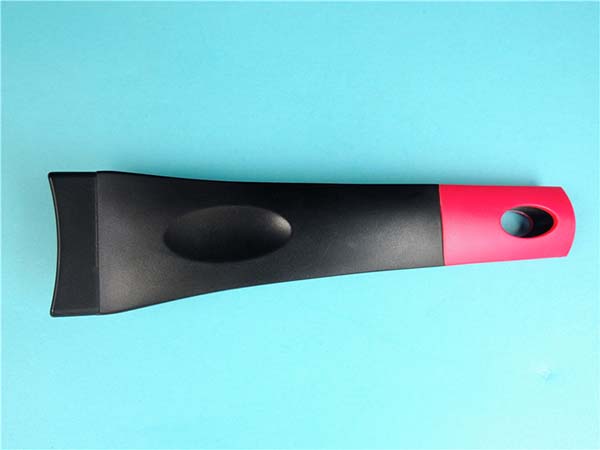1. Introduction: The New Frontier of Optical Innovation
In the fast-evolving world of optics, precision and speed are no longer mutually exclusive. Lens rapid prototyping has emerged as a transformative technology, bridging the gap between conceptual design and functional optical components. By integrating advanced manufacturing techniques like Stereolithography (SLA), CNC machining, and digital light processing, this discipline enables engineers to iterate lens designs with unprecedented agility. This article explores how lens rapid prototyping is reshaping industries from consumer electronics to medical devices, leveraging data, technical insights, and real-world applications to demonstrate its revolutionary impact.
However, with the advent of lens rapid prototyping, the game has changed entirely. This technology allows for the direct translation of digital designs into physical prototypes in a fraction of the time. By using additive manufacturing techniques like SLA, which cures liquid resin layer - by - layer under the exposure of a laser, highly complex lens geometries can be fabricated without the need for extensive tooling. CNC machining, on the other hand, offers high - precision subtractive manufacturing capabilities, removing material from a solid block to create the desired lens shape with micron - level accuracy.
Moreover, Yigu Technology lens rapid prototyping also paves the way for the development of custom - designed optics. In applications such as medical endoscopy or high - end microscopy, where each device may have unique optical requirements, the ability to rapidly produce customized lenses can improve the performance and functionality of these instruments. The following sections will delve deeper into the specific techniques, applications, and future prospects of lens rapid prototyping, highlighting its role as a catalyst for innovation in the field of optics.
2. The Technical Core: How Lens Rapid Prototyping Works
2.1. Core Technologies Driving Precision
2.1.1. Stereolithography (SLA) for Micro - Precision
SLA stands at the forefront of optical prototyping, using UV - cured photosensitive resins to build lenses layer by layer with remarkable precision. This technology is particularly well - suited for applications that demand high - resolution details and complex geometries. The process begins with a digital 3D model of the lens design. A laser, typically a UV laser, traces the cross - sectional shape of each layer onto the surface of a liquid resin bath. As the laser hits the resin, it cures and solidifies the material, gradually building up the lens structure from the bottom up.
Key advantages of SLA for lens prototyping include:
- Optical Clarity: Resins like DSM Somos Water Shed XC achieve an impressive 92% light transmittance. This high level of transparency makes them excellent substitutes for traditional materials like polycarbonate in lens prototypes. In applications such as camera lenses or optical sensors, where light transmission is crucial, SLA - made lenses can closely mimic the performance of their mass - produced counterparts. For example, in a high - end DSLR camera lens prototype, the use of a high - clarity SLA resin can ensure that the captured images have minimal distortion due to light scattering within the lens.
- Surface Finish: With a surface roughness of Ra 0.8μm, SLA - fabricated lenses often require little to no post - processing for most applications. This smooth surface finish is critical for reducing light scattering, especially in imaging lenses. In microscopy lenses, a smooth surface ensures that the light rays are focused precisely, resulting in clear and detailed images. A rough surface could cause light to scatter in different directions, reducing the resolution and clarity of the final image.
2.1.2. CNC Machining for High - Accuracy Glass Lenses
When it comes to optical glass and crystalline materials such as sapphire or germanium, precision CNC (Computer Numerical Control) machining with diamond tools is the go - to technology. CNC machining is a subtractive manufacturing process, where a computer - controlled machine removes material from a solid block to create the desired lens shape. Diamond tools are used due to their extreme hardness, allowing for the precise shaping of these tough materials.
The process involves programming the CNC machine with the detailed 3D model of the lens. The machine then uses the diamond - tipped tools to carve out the lens, with the ability to achieve micron - level accuracy. For Yigu Technology example, in the production of a high - precision telescope lens made of optical glass, CNC machining can ensure that the curvature and surface finish of the lens are within extremely tight tolerances, enabling the telescope to capture clear and sharp images of distant celestial objects.
A comparative table highlighting the differences between SLA, CNC machining, and a hybrid approach (combining SLA and CNC) for lens prototyping:
| Parameter | SLA (Resin) | CNC (Glass) | Hybrid (SLA + CNC) |
| Material Range | Polymers | Glass, Crystals | Composite Structures |
| Minimum Feature Size | 100μm | 50μm | 75μm |
| Thermal Stability | 80°C | 500°C+ | 150°C |
| Lead Time (100mm Lens) | 12–24 hours | 48–72 hours | 36–48 hours |
As seen in the Yigu Technology table, SLA is faster in terms of lead time and suitable for polymer - based designs with relatively large feature sizes. CNC machining, on the other hand, offers superior thermal stability and can handle smaller feature sizes, making it ideal for high - temperature applications and lenses made of glass or crystals. The hybrid approach combines the advantages of both, offering a balance between speed, material flexibility, and accuracy.
2.2. Material Innovation: From Resins to Advanced Composites
Modern lens rapid prototyping is not just about the manufacturing process but also heavily relies on the innovation of materials. Specialized materials are being developed to meet the diverse requirements of different optical applications.
- High - Index Resins: These resins have a refractive index (nD) of up to 1.65, which is crucial for the design of aspherical lenses. Aspherical lenses are designed to correct for spherical aberration, a common optical defect that causes blurriness in images. High - index resins allow for more compact lens designs while maintaining high optical performance. In a smartphone camera, for example, the use of high - index resins in the lens can enable a thinner and more lightweight camera module without sacrificing image quality.
- Athermal Materials: Silicone - based resins with a low thermal expansion coefficient of 15ppm/°C are becoming increasingly popular for lenses operating in extreme temperature environments, such as - 40°C to 85°C. These materials can maintain their optical properties even when subjected to significant temperature changes. In automotive headlights, which can experience rapid temperature fluctuations during operation, athermal materials ensure that the lens shape remains stable, preventing any distortion of the light beam and maintaining optimal illumination.
4. Industry Applications: Where Innovation Meets Reality
The true measure of lens rapid prototyping's impact lies in its diverse applications across multiple industries. By enabling the production of high - quality, customized lenses in a short time frame, it has become an essential tool for companies looking to gain a competitive edge.
4.1. Consumer Electronics: Miniaturization at Scale
In the consumer electronics industry, the demand for smaller, more powerful devices has never been higher. Lens rapid prototyping plays a crucial role in meeting this demand, especially in the development of smartphone camera modules.
Smartphone camera modules rely on rapid prototyping to integrate several key components:
- Ultra - Thin Lenses: The trend towards ever - thinner smartphones has led to the development of ultra - thin lenses. For Yigu Technology example, lenses as thin as 0.7mm made of plastic with aspherical shapes are now being produced. These lenses can achieve a concentricity of ±0.01mm, which is crucial for maintaining optical performance. This level of precision allows for the integration of 10x zoom capabilities within an 8mm - thick camera module. In contrast, traditional lens manufacturing methods would struggle to produce such thin lenses with the required precision in a timely manner.
- Multi - Layer Coatings: To improve the performance of smartphone cameras in low - light conditions, multi - layer coatings are essential. With lens rapid prototyping, prototypes can receive anti - reflective coatings with a reflectance of ≤1% in under 24 hours. This rapid coating process accelerates the validation cycle for new camera designs, allowing manufacturers to quickly test and optimize the performance of their lenses for low - light photography.
4.2. Medical Optics: Customization for Precision Care
In the medical field, precision and customization are of utmost importance. Lens rapid prototyping is revolutionizing medical optics by enabling the production of patient - specific optical devices.
In ophthalmology, rapid prototyping addresses patient - specific needs in several ways:
- Surgical Endoscopes: For minimally invasive surgical procedures, small - diameter endoscopes with high - quality lenses are essential. A 2.5mm - diameter lens with 95% light transmission and an edge thickness of 0.05mm can be prototyped using SLA. These lenses are designed to provide clear visualization during surgery. In a study, it was found that the use of such high - quality, small - diameter lenses in surgical endoscopes reduced surgical site trauma by 30% compared to older, bulkier endoscopes. This is because the smaller lenses can access more delicate areas with less invasive techniques.
- Custom Contact Lenses: For patients with irregular astigmatism, off - the - shelf contact lenses often do not provide optimal vision correction. With lens rapid prototyping, 3D - printed molds can be created from patient corneal scans. These molds can achieve a curvature accuracy of 0.01mm, resulting in custom contact lenses that provide better comfort and vision correction for patients with irregular astigmatism.
4.3. Aerospace & Defense: Withstanding Harsh Environments
The aerospace and defense industries have some of the most demanding requirements for optical components. Lenses used in these applications must be able to withstand extreme temperatures, high - speed vibrations, and other harsh environmental conditions.
Rapid prototyping ensures lenses perform in extreme conditions in the following ways:
- Infrared Lenses: Germanium lenses are commonly used in missile guidance systems due to their excellent infrared transmission properties. These lenses are CNC - machined to achieve a focal length tolerance of ±0.002mm. This high level of precision ensures that the lenses maintain clarity even when the missile is traveling at Mach 2 speeds. Any deviation in the focal length could lead to inaccurate targeting, highlighting the critical importance of such tight tolerances.
- Thermal Stability Testing: SLA - produced prototypes of satellite optics are subjected to - 196°C cryogenic testing. This testing helps to identify warpage risks 40% faster than traditional methods. By quickly identifying potential issues, engineers can make design adjustments early in the development process, reducing the overall development time and cost of satellite optical systems.
6. Choosing the Right Prototyping Partner: Key Considerations
Selecting the right prototyping partner is a critical decision that can significantly impact the success of your lens development project. Here are some key factors to consider:
6.1. Technical Expertise
When evaluating potential partners, look for those with in - depth experience in working with the materials relevant to your project. For Yigu Technology example, if you are developing precision optics, a partner with expertise in working with Schott glass can be invaluable. Schott glass is known for its high - purity and excellent optical properties, making it a popular choice for high - end optical applications. A prototyping partner familiar with handling Schott glass will have the necessary knowledge and skills to work with its unique characteristics, ensuring that the final lens prototype meets your exacting standards.
In addition to material expertise, industry - specific certification can also be a strong indicator of a partner's capabilities. For medical device applications, a partner with ISO 13485 certification is highly desirable. This certification is a globally recognized standard for medical device quality management systems. It ensures that the partner follows strict processes for design, development, production, installation, and servicing of medical devices, which is crucial for maintaining the safety and effectiveness of medical optics.
6.2. Metrology Capabilities
Accurate measurement and quality control are essential in lens prototyping. Your prototyping partner should have access to advanced metrology equipment to ensure that the lenses meet the required specifications. Coordinate Measuring Machines (CMMs), such as the Zeiss PRISMO, are widely used in the industry for precise dimensional measurements. The Zeiss PRISMO can achieve an accuracy of ±0.0015mm, allowing for the detection of even the slightest deviations in lens geometry. This level of precision is crucial, especially for lenses used in applications where small errors can have a significant impact on performance, such as in high - end imaging systems or laser - based devices.
Interferometers are another important piece of metrology equipment for lens prototyping. These devices are used to measure wavefront errors, which are critical for assessing the optical quality of lenses. A high - quality interferometer should be able to measure wavefront errors to within <λ/10, where λ is the wavelength of light. This level of precision ensures that the lens can focus light accurately, minimizing aberrations and maximizing image quality.
6.3. Turnaround Flexibility
In the fast - paced world of optics development, time is often of the essence. You need a prototyping partner who can offer flexible turnaround times to meet your project deadlines. Some companies, like Protolabs’ SLA Express, offer 24 - hour rush services for SLA - based prototyping. This can be a game - changer for projects with tight schedules or for situations where you need to quickly iterate on a design. For Yigu Technology example, if you are in the final stages of developing a new camera lens for a smartphone launch and need to make last - minute design adjustments, a partner with rapid turnaround capabilities can ensure that you have the updated prototypes in time for testing and validation.
On the other hand, if your project has a more relaxed timeline, a partner may be able to offer cost - effective options with longer lead times. This flexibility allows you to balance cost and speed according to your project requirements. For research - based projects where the focus is on exploring different design concepts, a slightly longer turnaround time may be acceptable if it means significant cost savings. By choosing a partner with a range of turnaround options, you can optimize your lens prototyping process to meet both your time and budget constraints.
7. Conclusion: The Dawn of Optics 4.0
Lens rapid prototyping represents a monumental shift in the landscape of optical engineering. It has transcended the limitations of traditional manufacturing, offering a new paradigm that combines speed, precision, and design flexibility. By integrating advanced technologies like SLA and CNC machining with innovative materials, it has opened up a world of possibilities for optical innovation.
The applications of lens rapid prototyping across industries such as consumer electronics, medical devices, and aerospace are a testament to its transformative power. In consumer electronics, it has enabled the miniaturization of optical components, leading to sleeker and more powerful devices. In the medical field, it has made customized optical solutions a reality, improving patient care and surgical outcomes. And in aerospace and defense, it has ensured that optical systems can withstand the harshest of environments, enhancing safety and performance.
FAQs
1. What is the most suitable material for lens rapid prototyping in high - temperature applications?
For high - temperature applications, materials like optical glass and certain crystalline materials such as sapphire or germanium, which are often machined using CNC technology, are ideal. These materials can withstand high temperatures (up to 500°C+ for glass) without significant changes to their optical properties.
2. How accurate are lenses produced through rapid prototyping?
The accuracy depends on the technology used. SLA can achieve a minimum feature size of 100μm, while CNC machining can reach 50μm. For example, in CNC - machined glass lenses for high - precision applications, the focal length tolerance can be as low as ±0.002mm.
3. Can lens rapid prototyping be used for mass production?
While lens rapid prototyping is primarily designed for the quick development of prototypes, some high - volume production applications are becoming more feasible, especially with the use of hybrid manufacturing approaches. However, for large - scale mass production, traditional manufacturing methods may still be more cost - effective in some cases.
